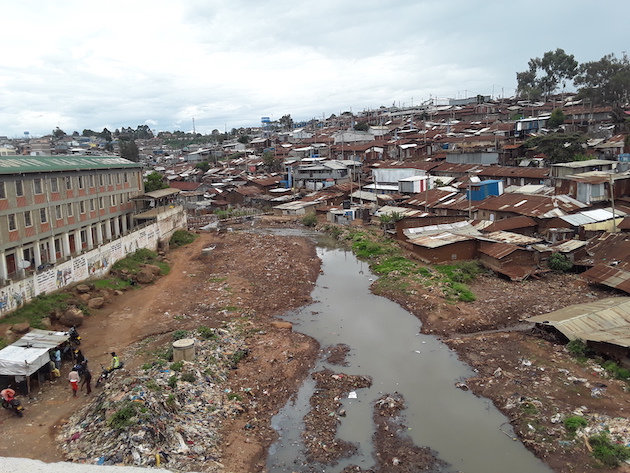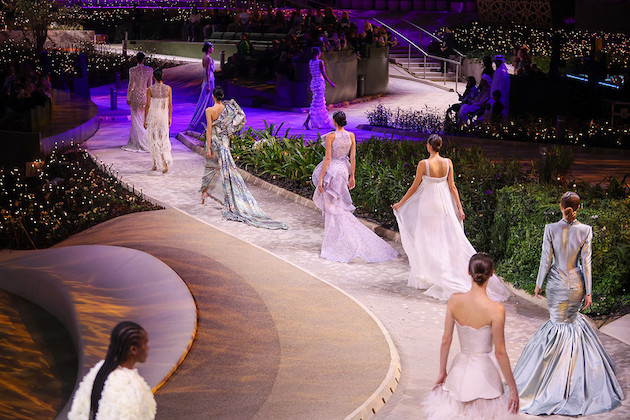Fashion Forward: Protect Africa from 'Fagia' Amid Alarming Global Stocktake

DUBAI, Dec 10 (IPS) - Thousands of bales of cheap, poor-quality secondhand clothing arrive on boats and ships docking on Africa’s extensive 26,000-kilometer-long coastline, dotted with at least 100 ports and harbors. From Nigeria, Zimbabwe, Madagascar, Uganda, and Kenya, Africa’s ecosystems are chocking with cheap, air-polluting, and emissions-producing low-quality clothing as they often contain plastic-based fibers.
High volumes of very low-grade used clothing commonly known as fagia, Swahili for sweep, as they are often sold to fagia traders in large volumes and for very little money—to cut into tiny pieces and sell as industrial rags and thereafter be used as industrial fuels—significantly cause air pollution and emissions.
The first-ever global stocktake is set to conclude at the ongoing COP28 and is a process for countries and stakeholders to assess progress towards meeting the goals of the Paris Climate Change Agreement. The world is not on track to limit global warming to 1.5 degrees Celsius, and the fashion industry has come under heavy criticism for expeditiously switching to sustainable fashion.


“We are a hub for climate-focused solutions derived from nature. We are helping the fashion and textile industry transform into a circular economy by developing and scaling new fibers and yarns that are made from seaweeds,” says Tessa Callaghan, co-founder and CEO of Keel Labs.
“Rather than using and mitigating the systems that we currently have, we are pairing an existing supply chain—in fiber and textile manufacturing—with new raw materials. For us, that is seaweed, which is able to negate the water, land use, and chemical usage that really make the fashion industry so polluting. We work with brands to help them transition to a better, cleaner future.”
Protein Evolution, also represented at COP28, is the U.S.’s first biological recycling company with validated technology and a clear supply-chain roadmap that enables plastic production from waste, not fossil fuels. The result is recycled plastic, which makes a low-carbon, circular plastic economy possible.
A circular economy is anchored on waste management, mitigating pollution by keeping products and materials in use for longer, and regenerating natural systems. In the fashion industry, circular fashion refers to a regenerative approach that ensures that clothing and textiles are designed, produced, and consumed with great consideration for the environment and related ecosystems, minimizing waste, pollution, and the use of natural resources.
UN research indicates that greenhouse gas emissions must peak before 2025 at the latest and decline 43 percent by 2030 to limit global warming to 1.5°C; crossing the 1.5°C threshold risks unleashing far more severe climate change impacts. To halt the pace and impact of the ongoing climate crisis, it can no longer be business as usual for the fashion industry.
Fast fashion—rapidly producing high volumes of clothing—causes extensive damage to the planet, exploits workers, and harms animals. An estimated 300,000 metric tons of clothing are dumped in household bins annually; approximately 80 percent of it is incinerated, while 20 percent goes to landfills.
The cost of fast fashion to the planet can no longer be ignored. The textile industry is responsible for 10% of all global CO2 emissions, which is more than all international aviation and shipping emissions combined. At the ongoing COP28 Summit, delegates heard from fashion industry players about steps being taken to reverse its negative impact on the climate, environment, and all its ecosystems and health.
“I would like to call what we do fashion farming, actually. We are trying to grow regenerative cotton and turn it into fabulous fabrics for our fashion lines. We have been working on this for the last five years, and we are trying to get farmers in our areas to try and succeed in regenerative agriculture. The idea is to build healthy, resilient, and interconnected ecosystems,” said Muzaffer Kayhan, CEO, SÖKTA? Tekstil.
"At SÖKTA?, we recognize the value and the inherent resilience of interconnected ecosystems. Through employing centuries-long regenerative practices, we seek to undo the negative environmental effects of industrial agriculture.
“We are the world’s first company to completely use plant-based fur as an alternative to animals, synthetic furs, and all sorts of fluffy materials. We work with fashion brands to provide an alternative to material that is more responsible, sustainable, and nature-derived—an ethical and green solution,” said Roni GamZon, co-founder and chief commercial officer, Biofluff.
New reports are highlighting the urgency of scaling up green solutions as greenhouse gas emissions hit new highs, temperature records tumble, and climate impacts intensify. According to the Emissions Gap Report 2023: Broken Record: Temperatures hit new highs, yet world fails to cut emissions (again) finds that “the world is heading for a temperature rise far above the Paris Agreement goals unless countries deliver more than they have promised.”
The Paris Agreement inspired near-universal climate action and played a central role in catalyzing cooperative action so the world could address the climate crisis. But the global stocktake shows implementation of the Paris Agreement is lacking across all areas and not where it should be.
Governments will take a decision on the global stocktake at COP28, which can be leveraged to accelerate ambition in their next round of climate action plans due in 2025. The stocktake calls for a systems transformation that follows a whole-society and whole-economy approach that mainstreams climate resilience and development aligned with low greenhouse gas emissions, and the fashion industry is expected to scale up green solutions and significantly contribute to the global journey to net zero.
IPS UN Bureau Report
Follow @IPSNewsUNBureau
Follow IPS News UN Bureau on Instagram
© Inter Press Service (2023) — All Rights Reserved. Original source: Inter Press Service
 Global Issues
Global Issues